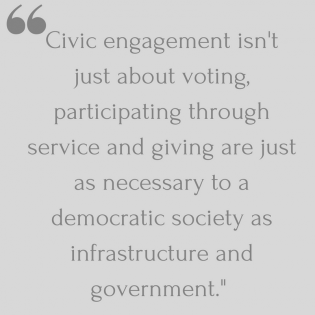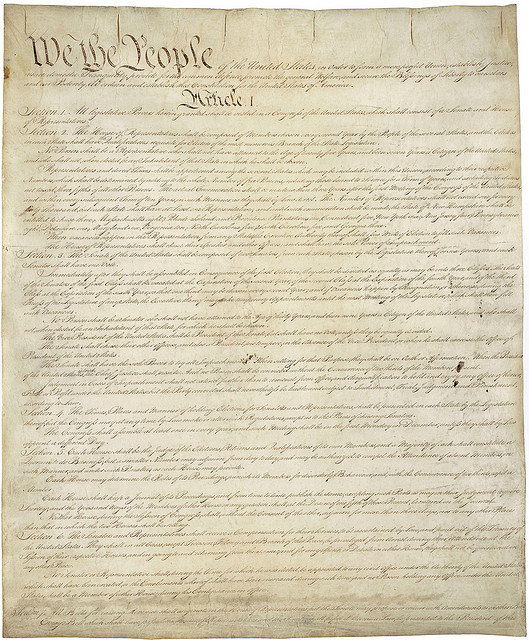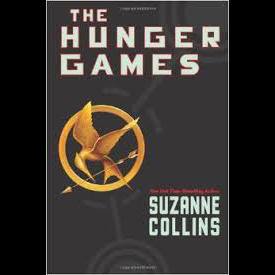The Constitution and Civic Engagement
The Constitution as a Guide for Civic Engagement
With the political division and uncertainty of where to get the best information, we are hearing differing ideas about the structure of government, as well as rights and responsibilities spelled out in the Constitution. The following teaching and learning resources may guide discussions with youth using primary documents.
Provocative Questions for Investigation:
- What are the rights and responsibilities of Citizenship?
- How does one participate in Civic Life?
Background: What Does the Constitution Say?
The Constitution of the United States, adopted in 1787 and put into effect in 1789, is the document on which the system of fundamental laws and principles that prescribes the nature, functions and limits of the government of the United States is recorded.The Constitution is made up of these sections:
- Preamble
- Articles 1-7
- Each Article contains numbered sections
- Each numbered section contains numbered paragraphs
- Amendments
- Bill of Rights (Amendments I through X)
- Civil War Amendments (Amendments 13-15)
- Other amendments
Constitutional principles:
- the rule of law
- separation of powers
- representative government
- checks and balances
- individual rights
- freedom of religion
- federalism
- civilian military control
Fundamental American beliefs include the right to life, liberty, economic freedom and pursuit of happiness. The purpose of government is to protect these rights and it may not place unfair or unreasonable restraints on their exercise. In addition to basic rights, America shares belief in the common good, justice, equality, religious freedom, diversity, truth, popular sovereignty and patriotism (Center for Civic Education).
Primary Documents:
The links below provide access to the full text of these historical documents to analyze and discuss.
The Constitution of the United States: A Transcription
The National Archives online provides full access to the text of the Constitution. The text is a transcription of the Constitution as it was inscribed by Jacob Shallus on parchment (the document on display in the Rotunda at the National Archives Museum.) The spelling and punctuation reflect the original. We can read the exact words of this historic document that informs the laws, government structure, and principles of the United States of America.
The Federalist Papers
These papers give us a glimpse inside the minds of the Founding Fathers as the Constitution was being ratified. The Federalist Papers are a collection of essays -- written by Alexander Hamilton, John Jay, and James Madison and published under the nom de plume Publius -- that range in topics from executive power to the size of government, checks and balances to the economy, and taxation for defense.
Discussion Questions:
- What are the definition and traits of a Representative Democracy?
- Is it a privilege or responsibility to vote?
- Is it a privilege or responsibility to take voluntary action for the common good?
- The Founding Fathers warned against domestic partisan factions in the Federalist Papers numbers 9 and 10. What problem did they say two parties could create?
- How could a focus on “the common good” decrease bi-partisan fighting?
- What can young people do to raise awareness of the language of the Constitution or the value of the common good?
- How does strict vs. loose interpretations of the Constitution impact interpretation of Presidential or Elected Official behavior?
Lesson Plans and Resources that explore the Constitution and our roles as citizens of the U.S.
- Roles, Rules, and the Constitution of the U.S. (grades K-2) We learn how the Constitution relates to rules and community roles and how we can improve our community for the good of all.
- What Does the Constitution Say about Philanthropy? (grades 3-5) We explore the components of the Preamble of the U.S. Constitution and apply them to our own lives, with a particular emphasis on philanthropy.
- Philanthropy Found in the U.S. Constitution (grades 6-8) We identify the components and rationale behind the Constitution, with a particular emphasis on philanthropy.
- U.S. Constitution: Significance and Structure (grades 9-12) We identify key events in U.S. history and the magnitude of the Constitution in context, with a particular emphasis on philanthropy.
- Video Clip and Discussion Guide - Philanthropy and the Government In all countries, there is a balance of what needs are addressed by government, by business, and the nonprofit sector. In the U.S. because of the good philanthropy does for all, there are tax benefits for nonprofits and for people who donate to philanthropy.
For more lessons related to the Constitution and Our Role as Citizens, click here and adjust the search by your grade level and subject area.
Service and Advocacy
- Hold a forum to educate and empower the community about the history, language, and calls to action in the Constitution.
- Identify quotes about service from Founding Fathers and others from the time. Share the quotes and a call to action in your social media.
- Advocate for an issue related to equity and rights. Make an effective Advocacy Poster.
- Research the Bill of Rights and learn the areas where people disagree about intent. State the facts and your position in an advocacy statement.
- Protest is a method of speaking up for the rights of people. Plan a Nonviolent Protest Simulation.
Using Dystopian Novels to Explore Our Rights
Many literature classes assign books that creatively envision the horrors of a future society where certain rights have been lost. Books like The Hunger Games, 1984, and Fahrenheit 451 help us appreciate the rights and responsibilities we have secured in our Bill of Rights. Not all people in the world have these rights.Expand critical thinking and raise awareness of the Bill of Rights by comparing the rights outlined in the Bill of Rights to the rights lost in the stories. Sample questions for analysis:
- Do the characters have free speech and right to a fair trial?
- Do they have choice of religion and the ability to question their government?
- Compare their life to life in the U.S. /Compare life in the book to life in a current country with limited rights.


